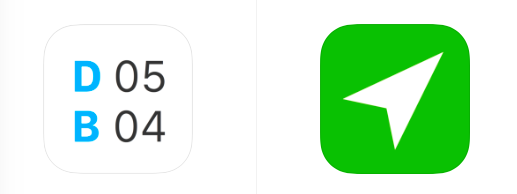If you work on the web, 256 is a value you will know for sure. There are 256 values for Red, 256 values for Green and 256 values for Blue to make up the RGB color space. It is also the only three digit number that is Zenzizenzizenzic.
This week also shares it’s name with a large main belt asteroid named after a Belgian saint, 256 Walpurga.
The workload has been light this week. People are slowly getting back into the swing of things after the holidays. We had a short phone meeting with some folks in Australia interested in some potential dashboard work. That is looking positive and we’re waiting for some potential wireframes before we can give a good estimate.
We also publicly launched material.is the website for our potential conference this fall. In week #257 we’re spending a few days planning. We’ll try to finalise a date, venue and budget. If time permits, we’ll also work on some video for our Kickstarter video. If you are interested in coming to Reykjavik, Iceland for a conference this fall with the theme of looking at the Web as a material not unlike wood, plastics or metal, then you should visit material.is and add yourself to our mailing list!
The other thing we started this week was to slowly roll-out to our beta testers two new iOS apps we’ve been working on. Our first is called “GeoColor”. It is a very basic “hello world” style app which gets you latitude and longitude and echoes that back to you with your GeoColor. This is the hex and RGB values of your current location. It is based on the code we wrote back in 02010 for the HLS world map. Now it is in app form. We are making a nice website for this explaining a bunch of our thought process. (Note: this sort of thing shouldn’t be an app, it should be just a website!) Since this was our first iOS app, we started with something simple to learn more about the whole iTunes Connect process. With a few tweaks, it should be available on the iTunes store for free. Our second app is again, something that shouldn’t have to exists, but it is scratching an itch that can’t be filled in any other way. The new Apple TVs allow you to write very similar code to that of an iOS device. One major drawback of the Apple TV is that it lacks a web browser, so while this second project should be a website, that means it isn’t accessible on the Apple TV. So we’re currently beta testing our own Artisanal Web Browser to display the content we need. More on this later.
The Material conference and iOS/tvOS apps will be our projects for 02016. They are born out of things we want to discuss: the needs, properties and affordances of the Web, and working with new technologies that are connected, but lack a browser. These are devices like the Apple TV, but are true of many future Internet of Things toys.
Conferences
We’ll be attending both the O’Reilly Strata Conference in San Jose in late March and also the London Strata Conference in late May. Both are half-day workshops on the topic of D3 and data visualisations. We did a similar presentation a few months ago in New York. We’re taking on board the feedback and looking forward to presenting it a few more times.
Bric-à-brac
This is a mesmerising piece of furniture. There is a table of sand with a few small metal balls resting on top. Underneath is a motor and magnets to guide the balls above. The resulting patterns are like a Zen Rock Garden.
We pre-ordered the book back in November and it arrived this week. This video shows off some of the amazing photos taken at night in a helicopter above metropolitan areas, but the book is even more amazing.
